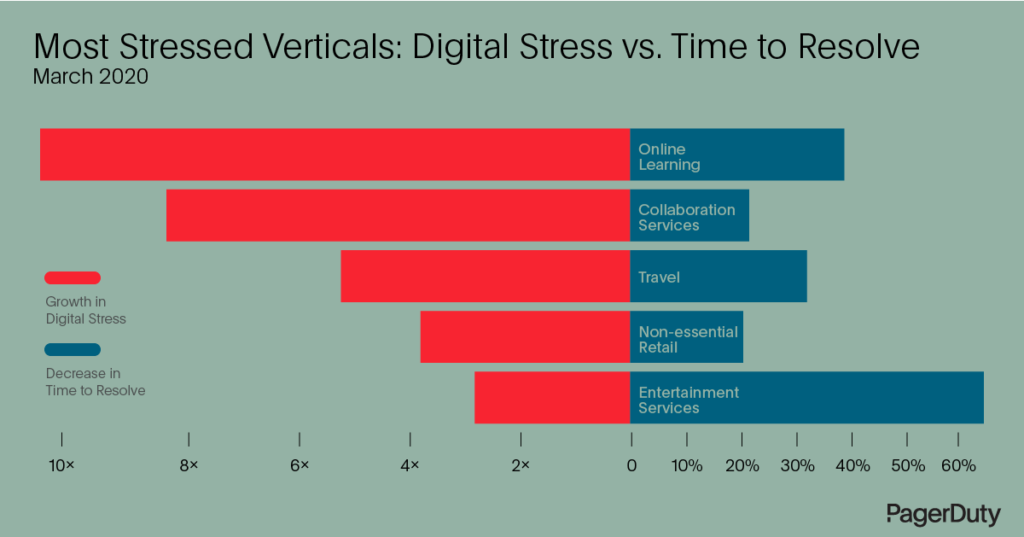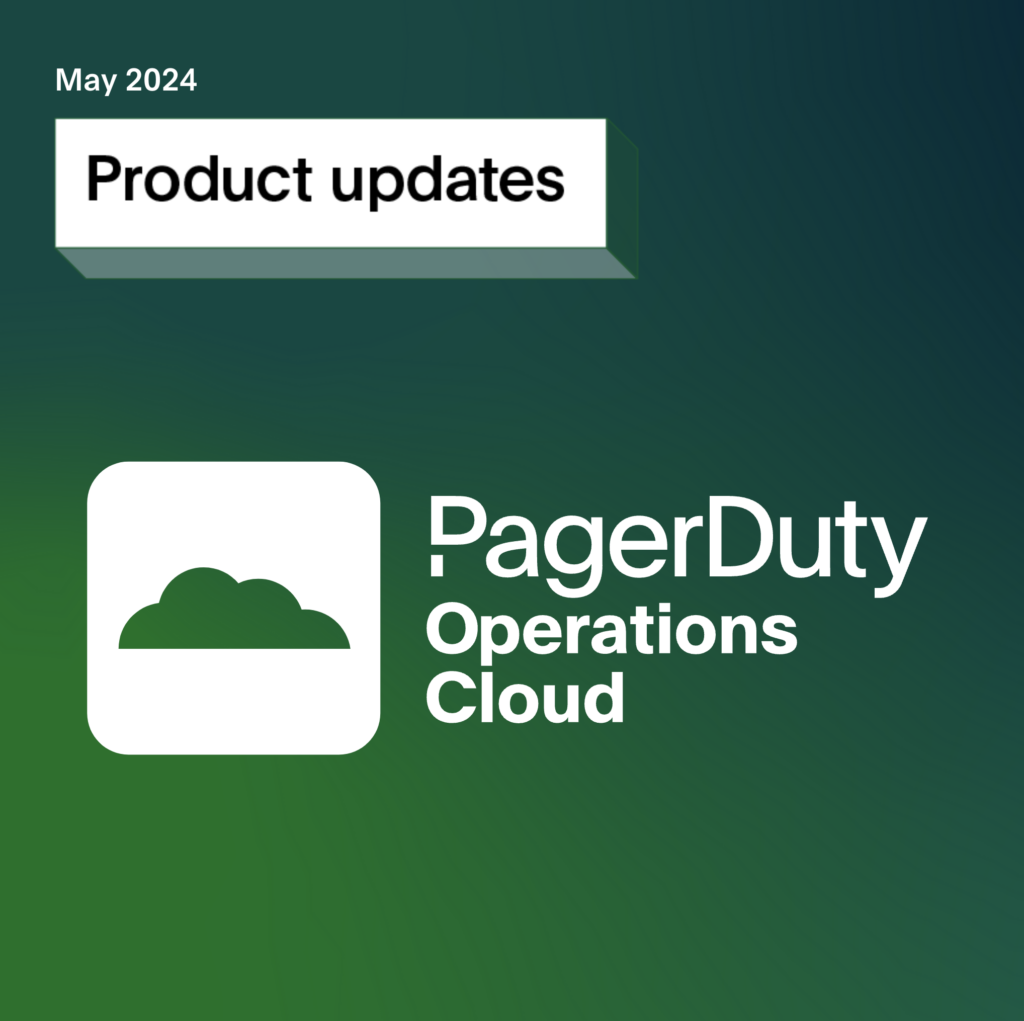- PagerDuty /
- Blog /
- Digital Operations /
- IT Teams Under “High Stress” Resolving Faster Than Ever Before
Blog
IT Teams Under “High Stress” Resolving Faster Than Ever Before
Seemingly simple digital moments, like checking into a flight, trigger a complex technical flow of events under the IT covers. A simple swipe or click relies on a complex IT ecosystem made up of millions of lines of code, spanning multiple software applications, hybrid and multi-cloud technologies, state-of-the-art IT infrastructure, security apps, and more. While getting on a plane seems a distant memory right now, it’s a great example of a single action that triggers a set of highly complex events.
Then something like COVID-19 happens. Suddenly, all the IT teams around the world aren’t just working hard to keep services running perfectly —they’re doing it from home, with kids and family life at their shoulders. They’re spinning up crisis response teams, designing new digital services that cater to surging increases in online traffic and demand, while helping the business pivot to support remote workforces and retain customers exclusively through online channels. To say that IT is facing pressure right now is an understatement. They’re under huge digital stress.
We recently shared some data on just how much stress they are facing. Verticals such as online learning are seeing an 11x increase in the number of daily incidents, while collaboration services are experiencing an average jump of 8.5x the number of incidents. To offer wider context, across the 12,000+ customers we work with, the rate of incidents has doubled for everyone.
What this all means: IT is facing more demands than usual along with all the challenges listed above. Our CEO, Jennifer Tejada, talked about this very point in an interview with CNBC recently.
Despite Surging Demand, IT Is Resolving Faster Than Ever Before
The silver lining on this digital stress, however, is the way IT is actually improving the time it takes to resolve more incidents. Check out the chart below, which shows some really great work by IT teams right now.

Unsurprisingly, online learning is one of the hardest-hit verticals yet—look at how these platforms are managing to decrease the average time it takes to resolve an incident! They’re resolving 39% faster than they were pre-pandemic. And entertainment services has significantly improved, with a 63% faster time to resolve in the last few weeks.
We believe this means that companies have shifted gears into what we call “hyper-care” mode.
‘Acking and Owning’ in Hyper-Care Mode
We use the term “hypercare” here at PagerDuty to describe a state of heightened preparedness within the IT organization. Typically, during times like this, you’ll see IT teams focus on the following:
- Establish or mobilize crisis response teams so that the most urgent issues are addressed quickly and effectively, with the appropriate resources. This will protect the customer experience and business revenue.
- Reliability as the No. 1 priority for everyone on the IT team, which means non-essential features are put on hold so that the most important services can scale to meet the high demand.
- Take an “outside-in” approach to monitoring customer experiences and sentiment via typical monitoring data, as well as site traffic and social media.
- Identify issues and resolve in real time via automated incident response, which brings together the right people and the right data.
When you consider just how big the surge in incidents and pressure has been of late, it really brings home what a great job the teams have been doing at reducing resolution response rates by such large margins.
IT teams have always been the “invisible” backbone of digital services, and with the unprecedented increase in demand for IT support, we believe they are also “hidden” essential workers. We are proud to see so many of our customers succeeding under such pressure and that they trust us as a key IT partner.


